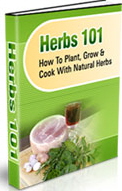History Of Chive Plants
Chives are a member of the garlic and onion family of plants. They are the only members of that family with wild uncultivated plants growing in the old and the new world. They are native to Asia, Europe, and North America. They have a long history of culinary use. They have been used in food for at least 5,000 years. They were probably first used and cultivated as herb garden plants by the Chinese. Later on, early American settlers brought them to the new world. The word chive comes from the Latin “cepa” which means onion. The Latin word evolved to “cive” in the French language, and eventually to the English “chive.”
Although some people erroneously assume that chive plants don’t have bulbs like other members of the onion and garlic family, they are bulb-forming plants. The bulbs are very small and conical in shape, so they don’t look like other types of onion bulbs. The stems are hollow and cylindrical in shape. The plant grows a pretty purple flower with six petals, a pretty addition to any herb garden. The emergence of these flowers is a signal of spring, since it is one of the earliest flowers to appear after winter.
Growing Chive Plants
Growing this plant in a home herb garden isn’t hard. You can plant them from seed in the spring after the last frost. Plant the seeds about ½ inch deep. They prefer soil that is well drained, with a constant level of moisture and a consistent temperature of 60-70 degrees Fahrenheit. They prefer soil with ample air circulation. They need full sun. They don’t compete with other plants very well, so it is important to keep their growing area free of weeds. It’s okay to use compost that is aged. However, don’t use a lot of fertilizer, or fertilizer that contains a lot of nitrogen. Avoid mulching near the bases of the plants because this can decrease the air circulation in the soil around the plant. Chives are not prone to many plant diseases, and are not prey to many insects, so they make a welcome addition to a vegetable or herb garden.
Harvesting
Once the plants are 6 inches tall, the leaves can be harvested by cutting them about 2 inches above ground level, using kitchen shears. It is usually best not to cut all of the leaves at the same time. This way the leaves can be harvested repeatedly throughout the season. Regular cutting encourages the formation of new bulbs. It also prevents flowering and prevents them from becoming tough and woody.
Culinary Uses
As part of the onion family, chives have a somewhat similar flavor to onions and garlic. However, the flavor is noticeably milder, making them preferable in dishes where just a hint of flavor is wanted. They are often used to flavor potatoes, egg dishes, fish, sandwiches, sauces, dips and soups. Even though we eat them in small quantities, they are a very nutritious plant that is a good or excellent source of a large number of vitamins and minerals. If you grow them in your own herb garden, you can have fresh chives to use almost anytime.
Chivey Divey Dip
4 tablespoons sour cream (or greek yogurt)
1 tablespoon mayonnaise
1 teaspoon lemon juice
Pinch of salt
5 tablespoons of fresh chives finely chopped
1 ½ teaspoon grated lemon peel
Mix together sour cream, and mayonnaise. Combine with lemon juice and salt. Add chives and lemon peel. Refrigerate a few hours before serving to let flavors dissipate. Stir again before serving.
Article Source: https://EzineArticles.com/7882889

